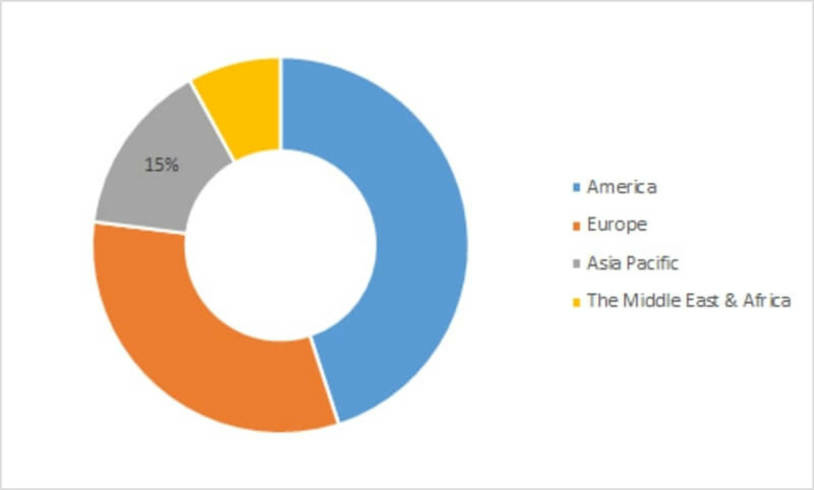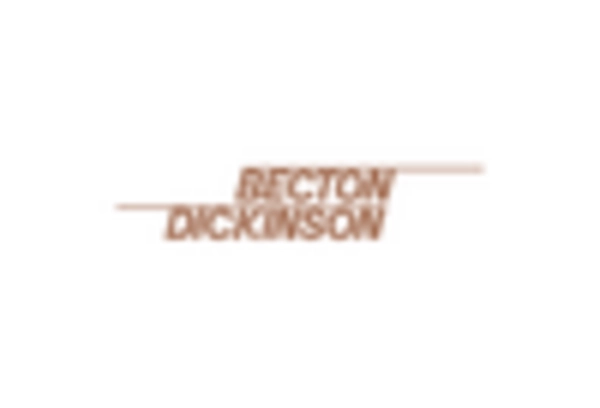Rising Geriatric Population
The Hematocrit Test Market is significantly influenced by the rising geriatric population, which is more susceptible to various health conditions, including anemia and cardiovascular diseases. As individuals age, the likelihood of developing these conditions increases, leading to a higher demand for regular hematocrit testing. According to demographic data, the global population aged 65 and older is projected to reach 1.5 billion by 2050. This demographic shift necessitates enhanced healthcare services, including routine blood tests to monitor hematocrit levels. Consequently, the Hematocrit Test Market is likely to see substantial growth as healthcare providers adapt to the needs of an aging population.
Emphasis on Preventive Healthcare Measures
The growing emphasis on preventive healthcare measures is shaping the Hematocrit Test Market. Healthcare providers are increasingly advocating for routine blood tests, including hematocrit testing, as part of comprehensive health assessments. This proactive approach aims to identify potential health issues before they escalate, thereby improving patient outcomes. Data indicates that preventive healthcare can reduce overall healthcare costs by up to 30% by minimizing the need for more extensive treatments. As awareness of the benefits of preventive care continues to rise, the demand for hematocrit testing is likely to increase, further propelling the Hematocrit Test Market.
Technological Innovations in Hematocrit Testing
The Hematocrit Test Market is experiencing a surge in technological innovations that enhance the accuracy and efficiency of hematocrit testing. Advanced devices, such as automated analyzers and portable testing kits, are being developed, which streamline the testing process and reduce human error. These innovations not only improve patient outcomes but also increase the throughput of laboratories. According to recent data, the adoption of automated hematology analyzers has led to a 30% increase in testing efficiency in clinical settings. As healthcare providers seek to optimize their operations, the demand for these advanced technologies is likely to grow, driving the Hematocrit Test Market forward.
Increased Investment in Healthcare Infrastructure
Investment in healthcare infrastructure is a pivotal factor driving the Hematocrit Test Market. Governments and private entities are increasingly allocating resources to enhance laboratory capabilities and expand access to diagnostic testing. This trend is particularly evident in emerging economies, where healthcare systems are being modernized to meet growing demands. Enhanced laboratory infrastructure facilitates the implementation of advanced hematocrit testing technologies, thereby improving diagnostic accuracy and patient care. As healthcare investments continue to rise, the Hematocrit Test Market is expected to benefit from improved access to testing services and increased adoption of innovative testing solutions.
Growing Prevalence of Anemia and Related Disorders
The rising prevalence of anemia and related blood disorders is a critical driver for the Hematocrit Test Market. Anemia affects millions worldwide, with estimates suggesting that approximately 1.62 billion people are anemic, particularly in developing regions. This increasing incidence necessitates regular monitoring of hematocrit levels, thereby propelling the demand for hematocrit testing. Healthcare systems are increasingly prioritizing early diagnosis and management of anemia, which further emphasizes the importance of hematocrit tests. As awareness of anemia's health implications grows, the Hematocrit Test Market is poised for expansion, catering to the needs of healthcare providers and patients alike.

















Leave a Comment